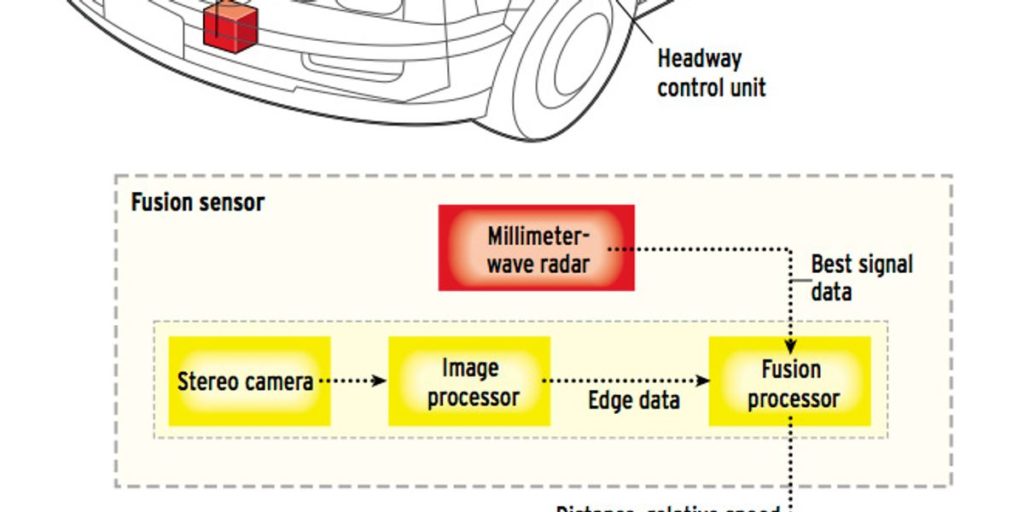What’s that up ahead? Such scenarios are 20 years away at least. Fortunately, automakers can do a great deal to improve safety with present technology. They have already started equipping high-end vehicles with sensors that detect motion and obstacles, coupled to processors that respond instantly to whatever is detected.
These adaptive cruise control (ACC) systems, which add $1500 to $3000 to the cost of a car, use laser beams or radar to measure the distance from the vehicle they are in to the car ahead and its speed relative to theirs. If a car crosses into the lane ahead, say, and the distance is now less than the preset minimum (typically a 1- or 2-second interval of separation), the system applies the brakes, slowing the car with a maximum deceleration of 3.5 m/s2 until it is following at the desired distance. If the leading car speeds up or moves out of the lane, the system opens the throttle until the trailing car has returned to the cruise control speed set by the driver.
In May 1998, Toyota became the first to introduce an ACC system on a production vehicle when it unveiled a laser-based system for its Progres compact luxury sedan, which it sold in Japan. Then Nissan followed suit with a radar-based system, in the company’s Cima 41LV-2, a luxury sedan also sold only in Japan. In September 1999, Jaguar began offering an ACC for its XKR coupes and convertibles sold in Germany and Britain. Like many ACC systems, it is the result of a group effort: Delphi Delco Electronic Systems supplies the radar sensing unit; TRW Automotive Electronics, the brake control; and Siemens, the assembly that manipulates the throttle.
Last fall, Mercedes-Benz and Lexus joined the adaptive cruise control movement. Lexus offers an ACC option for its top-of-the-line LS430; at the moment, it is the only ACC system availablein the United States. Mercedes’ system is an option on its C-Class and S-Class models, which are available in Europe; it was developed by M/A-Com, Lowell, Mass., and uses a radar made by Filtran Microcircuits Inc., in West Caldwell, N.J.
Although conventional cruise control is a much more popular option in North America than it is in Europe and Asia, none of the Big Three U.S. automakers has an ACC system in production yet. General Motors (GM) and Ford, however, are collaborating on a Collision Avoidance Metrics Project, whose results are expected to influence the companies’ early ACC offerings. Both plan to introduce ACC systems for calendar year 2002, GM in a Cadillac, and Ford in a Lincoln. By then, Opel, Saab, and Volvo will have also made systems available as options on some of their cars, according to Raymond Schubert, a researcher at Tier One, a Mountain View, Calif.-based automotive electronics market research firm.
Several automotive electronics firms have also built ACC systems, hoping to carve out a niche in a market that is expected to climb above $2 billion a year within a decade. Autocruise, a joint venture between TRW Automotive Electronics Inc., Cleveland, Ohio, and Thomson-CSF in Paris, introduced a radar-based system in March 2000. Eaton Vorad Technologies LLC, Galesburg, Mich., also makes radar-based systems for cars and trucks [see “Big Rigs Need Protection, Too”]. Neither offering has yet won a commitment from a major automaker.


